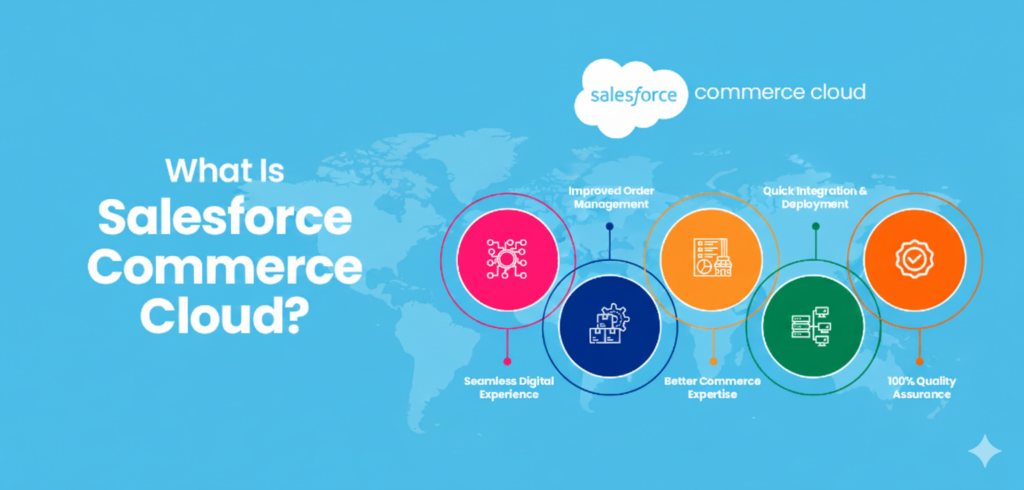The automotive industry is shifting gears. But how?
Brick-and-mortar retailers are racing to set up digital storefronts. According to this Statista report, the online aftermarket will nearly triple by 2027. That’s huge!
As a business owner, you’re probably wondering how to get in on this. How do you start selling auto parts online? What does it take to set up a successful digital shop?
We’ll break it down for you.
We believe the best way to understand what works in this space is to learn from those who have already succeeded. To see what success online business looks like, check out our case study on auto parts e-commerce website development, packed with proven strategies and best practices in the industry.
And for a complete guide on how to build a profitable auto parts business online – right from finding your target customers to marketing your business, keep reading:
Which Auto Parts Can You Sell Online?
When it comes to auto parts selling online, the sky’s the limit here. You can sell everything from filters and brake pads to engine parts and body components. But here’s the key: focus on your niche. Are you targeting DIY enthusiasts or professional mechanics? Do you specialize in vintage car parts or performance upgrades?
The more you niche down in a cutthroat market, the better.
The most widely sold auto parts online include:
- Replacement parts (filters, belts, spark plugs)
- Maintenance items (oils, fluids, waxes)
- Upgrade components (exhaust systems, suspension kits)
- Accessories (floor mats, seat covers, steering wheel covers)
Do keep in mind that parts like tires and batteries have special shipping requirements. Factor that in. Also, consider your storage capacity and supplier relationships. It’s better to excel in a few categories than to spread yourself thin across too many.
Who Will Buy Auto Parts Online?
Your potential customers are diverse. You’ve got DIY car enthusiasts tinkering in their garages. Then there are professional mechanics looking for better deals than their usual suppliers. Lastly, we have body shops and small auto repair businesses looking for high-quality yet affordable parts online.
Here’s an interesting stat: According to a recent survey by AutoPartsWarehouse, 80% of car owners are comfortable buying auto parts online. Your target demographic will typically include individuals who are:
- Tech-savvy
- Price-conscious
- Values convenience
- Aged 25-54 (your largest demographic)
These individuals are looking for better prices, wider selection, and the ease of doorstep delivery. Many prefer to research and compare parts online before buying. Your job as an online automotive parts seller is to make that process as smooth as possible for them.
OEM or Third Party?
The auto parts market is vast, and you can’t be everything to everyone. So, where do you focus?
Consider OEM (Original Equipment Manufacturer) parts versus aftermarket. OEM parts are exact replicas of what came with the vehicle. They’re reliable and often preferred by dealerships. But here’s the catch: they’re pricier and your profit margins might be thinner.
Aftermarket parts are generally made by third-party manufacturers. Third part spare parts are cheaper, which customers love. But quality can vary. Some are even better than OEM, which is why they are extensively used for performance upgrades.
Note:-
Try to stock up on hard-to-find parts for specific models. Reason? Less competition, higher margins. Or focus on performance upgrade parts for enthusiasts. A particular section of automotive aficionados will always be willing to pay a premium for the right product.
Whatever you choose, know it inside out. Be the go-to expert. That’s how you’ll stand out in this crowded market.
How to Sell Auto Parts Online - Detailed Guide
Setting up your own e-store is the smartest move you can make in the auto parts game. It gives you full control over your inventory, pricing, and customer experience. Plus, you’re not at the mercy of third-party marketplaces and their ever-changing rules. Let’s dive into how to get your store up and running.
Setting Up Your Online Store
This is indeed the most challenging and critical part of the whole process. But for your convenience, we have broken down all the steps into easy-to-digest nuggets. Here is how the process goes:
A. Choosing the Right E-Commerce Platform
First things first, you need to decide on the right e-commerce platform. This is crucial – it’s the foundation of your online presence. Popular options include Shopify, WooCommerce, and Magento. Each has its pros and cons.
Shopify is user-friendly and great for beginners, but it can get pricey as you scale. WooCommerce offers more flexibility, especially if you’re familiar with WordPress. Magento is powerful but has a steeper learning curve.
Consider your long-term goals. How big do you want to grow? How much customization do you need? Your choice of CMS used to build platform matters too. For instance, Drupal offers robust features for large-scale e-commerce sites. It’s worth exploring its capabilities if you’re planning a complex, high-traffic store.
B. Designing Your Website for User Experience
Now, let’s talk design. Your website needs to be more than just pretty – it needs to be functional. Think about your customer’s journey. They should be able to find parts quickly and easily. Implement advanced search options and product filters.
Make sure your site is responsive and mobile-optimized. Remember, many of your customers will be browsing on their phones while in their garage or at a repair shop. If you don’t have an in-house team to pull this task off, don’t worry.
You can always opt for fully managed, end-to-end web development services for your automotive e-store.
C. Integrating Payment Gateways
Payment gateways should be the very next thing on your auto parts e-store checklist. You want to make it as easy as possible for customers to give you their money. Options like PayPal, Stripe, and Square are popular. But also consider offering financing options – many customers prefer to spread the cost of expensive parts over time.
D. Setting Up Inventory Management
Up next, shift your focus on inventory management. This one aspect can make or break your business. You need real-time tracking to avoid overselling. Look into tools that integrate with your e-commerce platform.
Some good options include Ordoro, Skubana, or Linnworks. These can help you manage stock across multiple channels if you decide to sell on marketplaces like eBay or Amazon alongside your own store.
Get More Sales: Market Your Online Auto Parts Store
You might have the most extensive inventory of quality auto parts. But without a solid marketing strategy, your target audience will never find you. So, let’s explore how to effectively market your online auto parts store to stand out in a crowded marketplace.
A. Build an Effective SEO Strategy
Imagine someone searching for a specific auto part online. You want your store to be one of the first results they see, right? That’s where Search Engine Optimization (SEO) comes in. SEO is about making your store more visible to potential customers by aligning with the terms they’re searching for.
Start by digging into keyword research specific to your products. What are your customers typing into search engines? Whether it’s “high-performance brake pads” or “Toyota Corolla aftermarket parts,” identifying these keywords is your first step. But don’t stop there.
Integrate these keywords naturally into your product descriptions, meta tags, and image alt texts. Also, ensure your website is user-friendly, loads quickly, and is optimized for mobile devices. Google favors sites that provide a seamless experience, which can help you climb higher in search results.
B. Social Media and Content Marketing
Social media and content marketing offer powerful ways to engage with your audience and build your brand. Platforms like Instagram, Facebook, and YouTube are particularly effective for auto parts stores because they allow you to showcase your products and expertise in a visually engaging way.
Start by sharing content that resonates with your audience. This could be anything from instructional videos on how to install certain parts, to behind-the-scenes looks at your business, to customer testimonials.
Blogs are another valuable tool. Writing articles about common car maintenance tips or the benefits of certain auto parts can establish your authority in the industry and drive traffic to your site. Make sure your content doesn’t just inform but also inspire action.
C. Paid Advertising Strategies
While organic traffic is important, paid advertising can provide that extra push to reach a wider audience. Google Ads and pay-per-click (PPC) campaigns are particularly effective for targeting specific demographics and interests.
With PPC, you only pay when someone clicks on your ad, making it a cost-effective way to attract visitors who are already interested in what you offer.
Tailor your ads to highlight special promotions, new arrivals, or popular products. The key is to ensure your ads are relevant and targeted so that they reach the right audience at the right time.
D. Email Marketing Campaigns
A well-executed email marketing campaign can do wonders for your online auto parts business. Build a subscriber list with well-designed landing pages and social media outreach. Encourage visitors to sign up for your newsletter with a clear value proposition. It could be something as simple as a discount on their first purchase or access to exclusive content.
Pro Tip:-
Once you have a list, segment it based on customer behavior and preferences. This way, you can send targeted offers that are more likely to convert. Regularly update your subscribers with new arrivals, special promotions, and tips that enhance their buying experience.
Build a Strong Reputation With Excellent Customer Service
When shopping for auto parts online, customers can’t see the products up close, so your customer service has to be exceptional.
A. Responsive Customer Support
Imagine you’re a customer with a question about a part you’re about to buy. You’d want quick answers, right? That’s why being responsive is so important. Offering different ways for customers to reach you ( through chat, email, or phone) makes it easier for them to get the help they need whenever they need it.
Your support team should be well-versed in your products. When they can provide accurate information right away, it builds trust and reassures customers that they’re making the right choice. Consider adding a live chat feature in your auto parts online store to offer instant help.
B. Managing Customer Expectations
If your customers know exactly what to expect—like how long shipping will take or how returns work—they’re less likely to be disappointed later. Being upfront about these details can go a long way in keeping them satisfied.
And if something does go wrong? Provide quick resolution. Whether it’s a late delivery or the wrong item being shipped, owning up to the mistake and offering a solution, like a refund or replacement, can turn things around and keep your customers happy.
C. Building Customer Loyalty
Loyal customers are the true backbone of any successful business. To keep them coming back, you need to show that you value them. Simple gestures like a loyalty program, discounts for repeat purchases, or even a personalized thank-you note can make a big difference.
These little things not only encourage repeat business but also make your customers more likely to recommend your store to others. Over time, this helps you build a strong, loyal customer base.
Not sure how much it would cost to give your website a complete makeover?
Use this Website redesign cost calculator!
Wrap Up
Hope this article gave you all the insights and tips you needed to start selling auto parts online. The auto parts market is constantly growing and with the right execution, you can make it big as an auto parts seller in no time.
However, the process demands patience. And experience with web development. If you are not sure how to set up and manage an e-store for your auto parts business, do the wise thing and choose Codevian for full-cycle web app development services.
Frequently Asked Questions
How do I choose between selling OEM and aftermarket parts?
OEM parts are original and offer guaranteed compatibility, while aftermarket parts can be more affordable and varied. Choose based on your target market’s preferences and your ability to manage quality control.
What's the most important factor to consider when selecting an e-commerce platform for an auto parts store?
You need to focus on platform flexibility and integration capabilities to handle complex product catalogs, support various payment methods, and provide a hassle-free customer experience.
How can I manage inventory effectively to avoid overstocking or stockouts?
Use an inventory management system to track real-time stock levels and analyze sales data. Regularly review and adjust stock levels based on demand trends to prevent overstocking and stockouts
Should I source my auto parts from local or international suppliers?
Local suppliers offer faster shipping and easier communication, while international suppliers might provide better pricing and a broader selection. Consider factors like delivery times, costs, and reliability when making your choice.
Is it better to handle shipping in-house or use a third-party logistics provider for my online auto parts store?
You can use a third-party logistics provider (3PL) to simplify operations and reduce overhead, but handling shipping in-house offers more control. Consider your budget, volume, and the level of control you need to make an informed decision.







